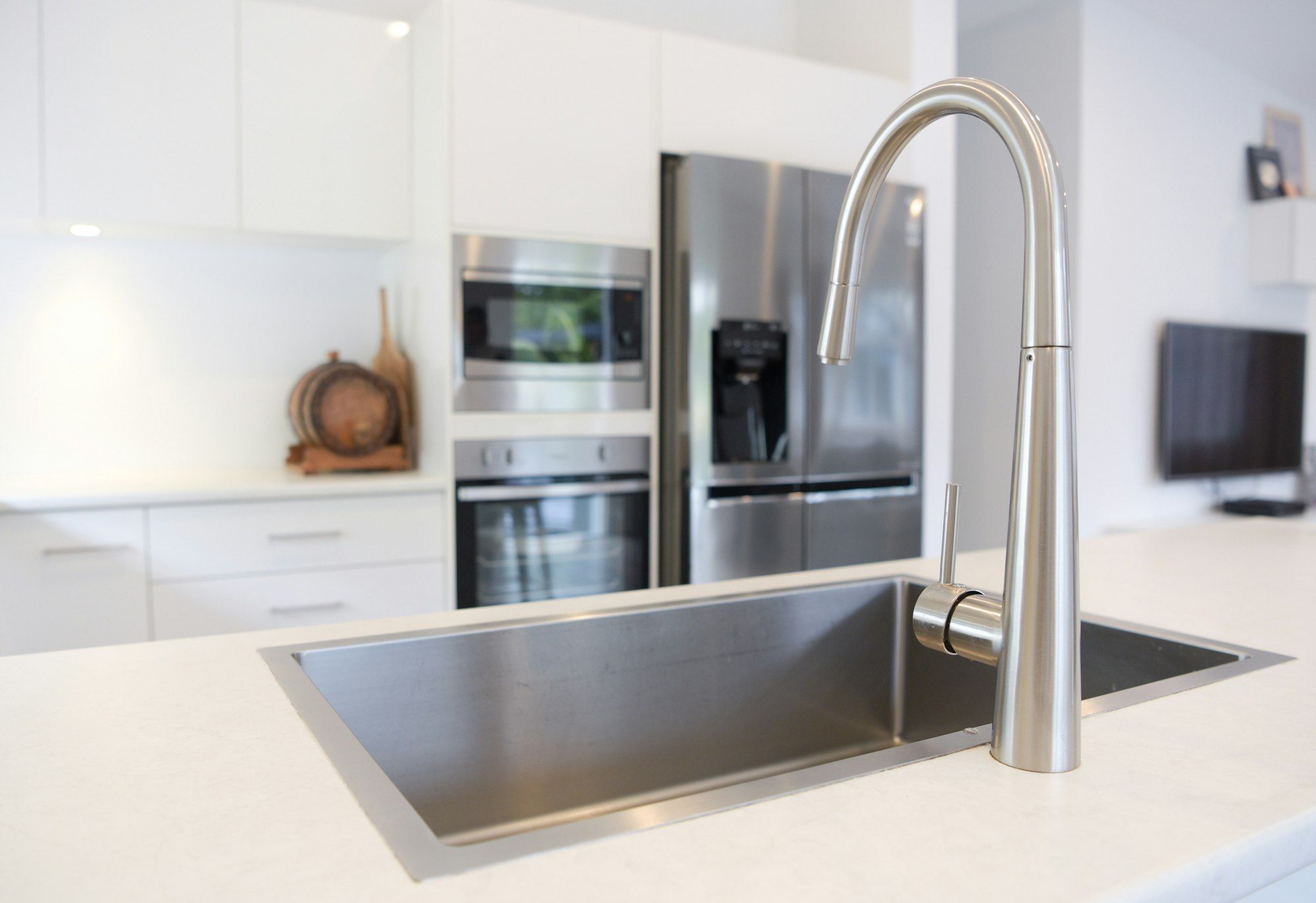The design of a kitchen is an interesting puzzle with many pieces to fit together. It’s about more than just picking out cabinets, countertops, and appliances. It’s about creating a functional, efficient space where you can prepare meals, entertain guests, or just enjoy your morning coffee. And while there’s no one-size-fits-all answer to the question of kitchen layout, there are a few important factors to consider.
Considerations for an Efficient Kitchen Layout
The best kitchen layout is the one that meets your specific needs, and those needs can vary greatly. Some people love to cook and need ample space for preparing meals. Others may prioritize entertaining and need an open layout that allows for easy interaction with guests. Regardless of your preferences, there are a few key considerations to keep in mind when planning your kitchen layout.
Additional reading : How can you maintain a granite countertop to extend its lifespan?
Layouts to Maximize Kitchen Space
The first step in designing an efficient kitchen is to consider your available space. Think about the shape and size of your kitchen area and how best to utilize it. There are several standard kitchen layouts that can help you maximize your space and improve efficiency.
The most common kitchen layouts include the one-wall, galley, L-shape, U-shape, and island layouts. The one-wall kitchen is the most basic layout, with all cabinets and appliances lined up along one wall. This layout is often used in small apartments or open-concept designs.
In parallel : What are the latest innovations in dishwasher technology for UK homes?
The galley layout, named after the narrow kitchens on ships, features two parallel walls of cabinets and appliances with a walkway in between. This layout is highly efficient for cooking, as everything is within easy reach.
The L-shape layout utilizes two adjacent walls, creating a more spacious and open feel. The U-shape layout takes this a step further, with cabinets and appliances on three walls. Both of these layouts work well with a kitchen island if space allows.
The island layout can be combined with any of the above layouts, but it requires more space. The island can serve multiple functions, such as additional prep space, a breakfast bar, or even a place for the cooktop or sink.
The Kitchen Work Triangle
One of the most effective ways to increase efficiency in your kitchen is to implement the concept of the kitchen work triangle. This concept focuses on the placement of the three most used areas in the kitchen: the sink, refrigerator, and stove.
The idea is simple: these three areas should form a sort of triangle, with no leg of the triangle being more than nine feet or less than four feet. This allows for easy movement between these key areas while cooking.
Strategic Storage and Cabinets
An often overlooked aspect of kitchen design is storage. Adequate storage can greatly increase the functionality of your kitchen. Consider the items you use most frequently and plan your cabinets around them. Items used daily should be kept at arm’s reach, while less frequently used items can be stored higher up or in harder-to-reach areas.
With modern kitchen design, there are many innovative storage solutions available. Pull-out spice racks, deep drawers for pots and pans, and custom inserts for utensils are just a few of the options that can help keep your kitchen organized and efficient.
Zoning Your Kitchen
Finally, consider zoning your kitchen. This simply means designating specific areas for different tasks. For example, you might have a prep zone near the sink, a cooking zone around the stove, and a cleaning zone near the dishwasher.
This kind of organization can greatly increase the efficiency of your kitchen, as it reduces the amount of time spent moving around. And it’s not just for large kitchens – even in a small kitchen, clear zones can make a big difference.
Commercial Kitchen Design Considerations
While the principles of efficient kitchen design apply to both residential and commercial kitchens, there are some specific considerations for commercial spaces. In a commercial kitchen, efficiency is key. The layout can make a significant difference in the speed and quality of food preparation.
In commercial kitchens, the work triangle often expands to a work “square” or “diamond,” incorporating additional appliances like a prep station or a commercial oven. Furthermore, commercial kitchens require considerations for health and safety regulations, including designated handwashing stations and specific materials for surfaces.
As you design your kitchen, remember that the best layout is the one that works for you. It should enhance your cooking experience, whether you’re a home cook or a professional chef. By considering your space, your needs, and your cooking style, you can create a kitchen that is not only beautiful, but also highly efficient.
Incorporating Technology for Kitchen Efficiency
In our technologically advanced age, incorporating smart technologies in your kitchen layout can be an integral part of creating an efficient kitchen. From smart refrigerators to intelligent cooking appliances, technology can streamline your kitchen workflow and enhance your culinary experiences.
Smart refrigerators, for instance, can help you keep track of your grocery list, give you recipe ideas based on what’s in your fridge, and even alert you when you’re running low on essentials. Similarly, intelligent cooking appliances can automate much of the food preparation process, allowing you to monitor cooking progress from your smartphone and freeing up your time to focus on other tasks.
Another area where technology can enhance kitchen efficiency is in the realm of lighting. Smart lighting systems can be customized to provide optimal lighting levels for different tasks and times of day, and can even be controlled remotely.
Apart from appliances, consider integrating technology into the layout island itself. A pop-up outlet in the island can provide handy charging stations for your devices, or power for countertop appliances. This technology-based approach can lead to a highly efficient kitchen, enhancing the overall kitchen workflow and making for a more pleasant cooking experience.
Also, for commercial kitchens, there are advanced kitchen design software options available. These tools can help you visualize different kitchen layouts, calculate the optimal work triangle, and even simulate kitchen workflow. This can be invaluable in the planning stages, helping to ensure the most efficient use of kitchen space.
Adopting Sustainability in Your Kitchen Layout
Sustainability is not just a trend; it’s a necessary shift that’s growing in the kitchen design industry. An efficient kitchen should also be a sustainable one. In addition to improving kitchen workflow and saving time, sustainable practices can also reduce energy usage and waste, leading to cost savings over time.
Choosing energy-efficient appliances is a great start, but there’s much more to consider. For example, the materials used in your kitchen can have a significant impact on its environmental footprint. Opt for sustainable materials like recycled glass for countertops, bamboo for cabinets, and cork for flooring.
In terms of layout, an L-shaped kitchen with a centralized island is a great choice for energy efficiency. This layout reduces the need for artificial lighting during the day, as it allows for optimal natural light distribution.
For commercial kitchens, consider incorporating green technologies like energy-efficient commercial ovens, induction cookers, and high-efficiency dishwashers. Additionally, a well-planned restaurant kitchen layout with clearly defined zones can reduce energy usage by minimizing unnecessary movement and optimizing workflow.
Conclusion
Designing the most efficient kitchen involves a thorough understanding of your specific needs, thoughtful consideration of your space, and careful planning. Whether it’s a galley-style layout for a small apartment, a spacious U-shaped kitchen with an island, or a high-tech commercial kitchen, the goal is to create a space that enhances kitchen workflow and makes food preparation enjoyable.
Remember, the most efficient kitchen is not the one with the most expensive appliances or the largest counter space. It’s the one that works best for you. It’s the kitchen where you can easily reach everything you need, where you can move smoothly from one task to the next, and where you can cook with joy and ease.
Incorporating the principles of the work triangle, zoning, strategic storage, and sustainability can significantly improve kitchen efficiency. So, whether you’re a professional chef designing a restaurant kitchen or a home cook planning a kitchen renovation, these principles can guide you to create a kitchen that is not just a place to cook, but a place to thrive.






